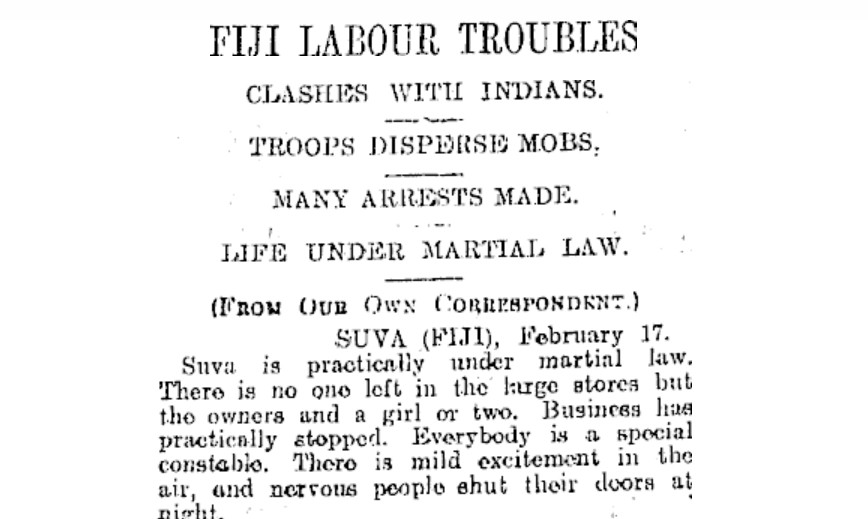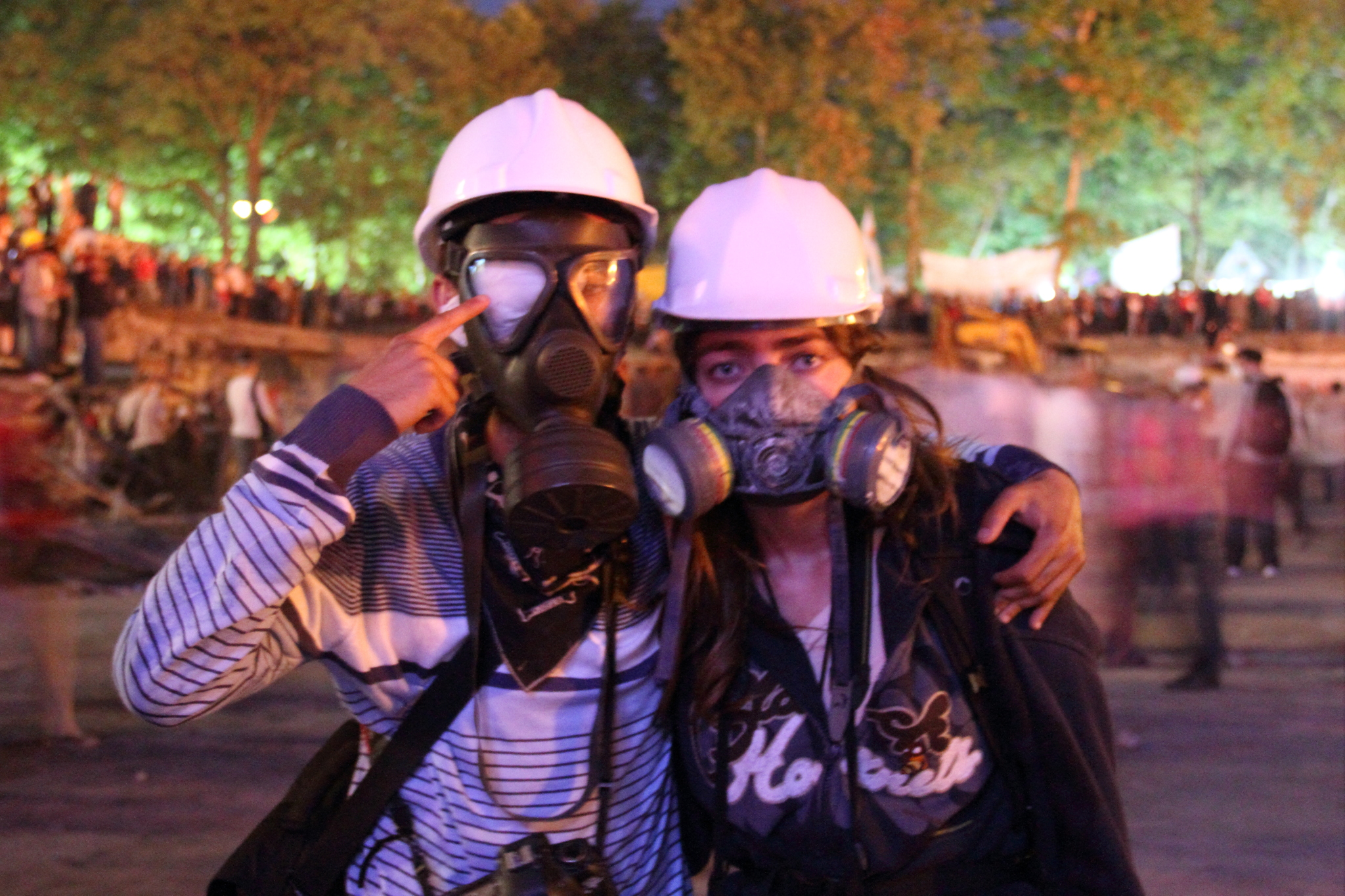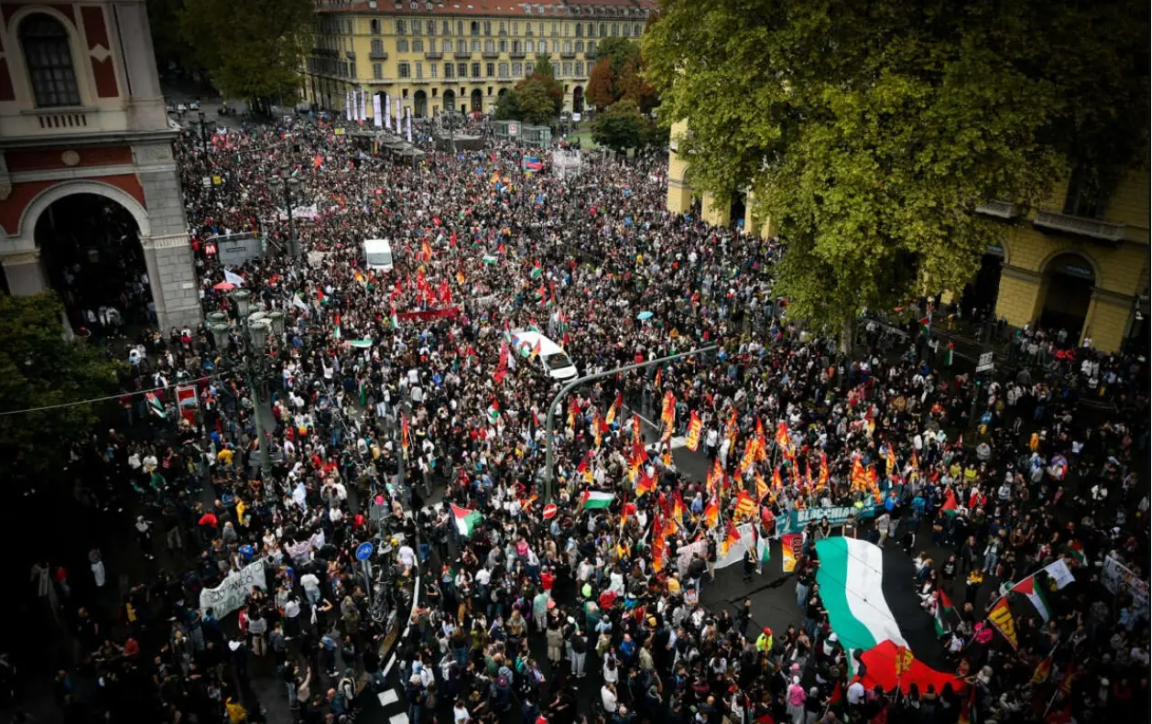Introduction
In an article published last August, A reflection on the French legislative elections 2024, I recounted how the fascist Rassemblement National (RN, formerly Front National) was pushed back.[i] After coming top in the June European Parliament elections, the RN was expected to win the June-July French legislative elections and get into government. Mass anti-fascist demonstrations and mass election campaigning for the Nouveau Front Populaire, a united front of the left, held RN to third place in parliamentary seats. The NFP won the elections instead, but not with an overall majority. The fascists in France were dealt a blow, but they are far from finished; after all, they got more votes than any other single party.
The French revolutionary left groups were divided over giving support to the Nouveau Front Populaire. The two largest groups had opposing views. Lutte Ouvrière (Workers’ Struggle) did not even support the NFP against the fascists in the second round of voting: it told its followers that they need not worry about voting for the NFP or abstaining. In contrast to the sectarianism of LO, the Nouveau Parti Anticapitaliste participated in the NFP and were allocated one electoral division to stand a candidate.
Differences on policies around the French elections have been expressed by the revolutionary left around the world. With fascism knocking on the door in several European countries, anti-fascist policies by the left assume weighty importance. The purpose of this article is to review the history of the united-front policy, a policy that is indispensable for stopping the progress of fascism. The united-front concept, however, has a chequered history.
What is a united front?
Before proceeding any further it would be as well to define what is meant by a united front. In essence, it is an alliance of working-class organisations – parties and unions – to resist attack from the ruling capitalist class. Theoretically, the policy could be applied in any situation where broad unity is needed to advance the position of the working class; however, the united-front policy really comes into its own when the threat from the right is so dangerous as to create the conditions where workers want united action. A united-front alliance is about practical action; it is not a common programme. It does not require that revolutionaries sacrifice their independence. The call for a united front is a bona fide proposal for action to meet the critical needs of the working class. A united front is of a scale that brings sections of the working class into action whether they be reformist, syndicalist, revolutionary or unaffiliated. Political campaigns that bring only small left-wing groups and individuals together are not united fronts but can be motivated by the spirit of united-front politics to involve the greatest possible numbers of people in action.
Before united front terminology came into use there had been examples of united-front policies in practice. For example, in Russia, in September 1917, a united front of the left stopped a coup attempt by Commander-in-chief General Lavr Kornilov to overthrow the Provisional Government and the Petrograd Soviet. Although Aleksander Kerensky’s Provisional Government had Trotsky in gaol and was hunting down Lenin, the Bolsheviks did not hesitate to unite with Kerensky’s Social Revolutionaries and the Mensheviks. The Bolsheviks were instrumental in successfully preventing Kornilov from marching on Petrograd and their popularity soared to set the stage for the October Revolution.
The Comintern
From 1919 to 1923, while Lenin was still alive and before Trotsky was side-lined, the early Comintern (Communist International) served as a school of revolutionary politics for emerging Communist parties world-wide. Throughout this period there was open debate within the Comintern and within national communist parties, including the Russian. When the post-First World War revolutionary wave receded world capitalism was stabilised and the Communist movement had to adjust to reaction and an employers’ offensive. With the communist movement on the defensive the Comintern developed the policy of the united front. It did not come easily. The Comintern had to overcome ultra-left opposition to calling for united action with reformists. The united front policy was:
“initially opposed by the French, Italian, and Spanish Communist parties, and by significant minorities in Germany, Czechoslovakia, Poland and elsewhere. Despite continuing disagreements, the Fourth Congress [November-December 1922] confirmed this policy and shaped it into a coherent plan: to build a militant and united worker-led movement against capitalist and fascist attacks, to counter growing inter-imperialist conflicts with heightened working-class internationalism, and to promote an effective, united movement for colonial freedom.” [ii]
The turn to a united-front policy began in Germany. In March 1920 the Kapp Putsch, a military coup attempt to overthrow the Social Democratic Party government, was repelled by a general strike supported by a united front of all the workers’ parties: Social Democrats (SDP), Independent Social Democratic Party (USDP) and the Communist Party (KPD).
In December 1920 a meeting of Stuttgart metal workers called on the leadership of their union, and all unions, for a joint struggle for improvements in workers’ conditions. Then in January 1921 the KPD issued an ‘Open Letter’, which was an appeal to all workers’ organisations for united action. These initiatives won widespread support among rank-and-file workers, but did not obtain the agreement of the SDP leadership. The Stuttgart meeting and Open Letter idea reflected the views of the likes of Clara Zetkin, veteran revolutionary and Stuttgart MP, and of Paul Levi, co-chair of the KPD. These initiatives marked a change of direction for the KPD. The KPD had habitually denounced the SDP but now it was proposed to challenge the SDP’s willingness to fight for reforms. Leftists in the KPD were alarmed at the change of policy. They saw the Open Letter as downplaying the perspective of revolution and instead concentrating on reformist demands.
John Riddell states:
“The initiatives of Levi, Zetkin, and their allies also encountered objections from Communists abroad. A current led by Hungarian Communists, including Béla Kun, called on Communists to sharpen their slogans and initiate minority actions that could sweep the hesitant workers into action – a policy later dubbed the ‘theory of the offensive’. Although criticised by Lenin, this concept found support in the Moscow-based ECCI [Executive Committee of the Communist International], including from Zinoviev and Nikolai Bukharin, leaders of the Comintern’s strongest component, the Communist Party of Russia (Bolsheviks). Influenced by these views, the ECCI initially criticised the German party’s Open Letter. Lenin supported it, however, and the matter was referred to the upcoming world congress.” [iii]
In February 2021, before the debate could take place at the Comintern’s June congress, the ultra-lefts on the KPD Central Committee, supported by emissaries of the ECCI, overturned Levi’s leadership and the Open Letter policy. In March the KPD, encouraged by the ECCI, attempted an insurrectional general strike. The March Action was a flop; it did not have support beyond Communist Party members. The ‘adventure’ was a costly failure for Communists losing their lives, liberty and jobs, and for the party losing thousands of members.
John Riddell:
“When the International met in congress in Moscow in June 1921, the five Bolshevik leaders assigned to the Comintern Executive were divided. Lenin and Leon Trotsky sought to repudiate the ultra-left course represented by the ‘theory of the offensive’ and the March Action, against opposition from Bukharin, Radek and Zinoviev. In a compromise decision, the Congress adopted the essence of the political course that Lenin and Trotsky advocated, while muting criticism of the KPD leadership and passing over the ECCI’s role in silence.”[iv]
Debate over the March Action at the June Congress led to the Executive adopting the united-front policy in December 1921 and calling a further meeting in February-March 1922 to discuss implementation. This latter meeting of the Executive was expanded to include delegates from member parties. The French, Italian and Spanish parties moved a resolution opposing the united front, but the majority endorsed the policy.
The next World Congress, the Fourth, took place in November and December 1922. Mussolini’s fascist seizure of power had taken place five weeks earlier. Fascism was unprecedented and it took time for the Comintern to grasp its principle. The ultra-left Italian leader Amadeo Bordiga failed to provide an understanding of the threat of fascism in his report.
“Prominent leaders of the Italian Communist Party (CP) denied any fundamental difference between Fascism and bourgeois democracy, viewing the fascist drive to power as the internal business of the ruling class and of no special concern to working people.”[v]
In the absence of the Italian Communists, and the Socialists, building resistance to fascist violence, an independent fighting organisation sprung up – the Arditi del Popolo (People’s Daring Ones). The Arditi del Popolo scored some successes against the fascists, but the Italian Communist Party was hostile to it and barred its members from joining. The ultra-leftism of the Italian party was also on show with regard to its attitude to the Socialist Party (SP). Not only did the Bordiga-ists fail to follow the united-front policy, they also refused fusion with the left-moving, pro-Comintern faction of the SP after the reformist wing of the party had been expelled.
The incoherence of Comintern policy on the united front in Italy was not confined to only the Italian delegation to the Fourth World Congress. Even Zinoviev, President of the Comintern, had a shaky grasp of the policy.
“More than once, Zinoviev coupled Mussolini and German Social Democrat Gustav Noske as agents of white terror against the working class. On one occasion he pointed to the similarity of ‘Fascist syndicalism’ to the reformist ideology of Social Democracy. His final word on Italy was to call for a united struggle against reformism and Fascism. Such formulations left little scope for united front initiatives toward reformist-led organisations.”[vi]
Another example of ultra-leftism within the Comintern arose on the eve of a meeting of the ECCI held in June 1923. A bloody right-wing military coup overthrew the elected peasant-based Bulgarian Agrarian National Union government headed by Aleksandor Stamboliyski. Stamboliyski and other BANU leaders were killed. Despite the absence of nation-wide leadership there was armed resistance to the coup by peasants – the June Uprising – which, however, was quickly defeated. Of crucial importance to this outcome was the abstention of the Communist Party from the struggle. It took the view that the coup was an internal matter between agrarian and urban branches of the bourgeoisie in which the working class had no interest. The Bulgarian Communist Party was one of the Comintern’s strongest sections; it had the support of the majority of the working class, was dominant in the trade unions, was the second largest party in parliament, and was well-armed. The Bulgarian party was roundly condemned at the ECCI. As if to make amends for its passivity, in September the party launched an ill-prepared uprising, which was crushed.
As mentioned above, the Fourth Congress, November-December 1922, did not have an adequate understanding of fascism. It fell to Clara Zetkin to report on fascism to the Plenum (full meeting) of the ECCI in June 1923. This she did brilliantly.
“Given the inadequacy of the Fourth Congress analysis of fascism, the clarity of Clara Zetkin’s report to the Third Enlarged Plenum [of the ECCI] is all the more remarkable. In fact this Plenum should be recognised as the site of the first major discussion in the international Marxist movement on the causes and nature of fascism.”[vii]
Zetkin’s analysis of fascism pre-dates, and is the same in all essentials, as that of Leon Trotsky as found in his 1930s writings on resisting the rise of the Nazis. The elements of the analysis laid out by Zetkin include: fascism’s mass character, its appeal to middle class layers, its violence aimed at working-class organisations, finance by the capitalist class, the need for workers’ self-defence guards and united-front action involving all working-class organisations regardless of political differences.
The June 1923 meeting of the ECCI adopted a resolution on fascism, authored by Zetkin, which reflected her written report. However, the Comintern’s newly-established policies on fascism and the united front were short-lived. At the June-July 1924 Fifth Congress of the Comintern they were reversed.
The Fifth Congress marks a break from the earlier congresses. Lenin, incapacitated in 1923, had died in January 1924 and Trotsky had been side-lined by the triumvirate of Stalin, Zinoviev and Kamenev. The Fifth Congress was a stepping stone to the fully-Stalinist Sixth Congress, which, given a lower priority for internationalism, was not held until 1928.
Joel Geier has described the reversal of the understanding of fascism and the retreat from the united-front policy at the Fifth Congress.[viii]
“… Zinoviev formulated an analysis of fascism and of social democracy that was, in essence, the forerunner of the theory of “social fascism” later fleshed out by Bukharin and Stalin at the Sixth Comintern Congress. The theory, which posited that social democracy and fascism are “twins,” precluded a united front between communists and social democrats against Hitler on the grounds that the former were no better than the latter. With no vocal opposition, Zinoviev claimed something similar in 1924: “The Social Democratic party has been converted into a wing of Fascism.”
“Amadeo Bordiga, who delivered the official report on fascism, added: “Fascism has merely adopted in a new form the old platform of left-Bourgeois parties and of the Social Democrats,” and that “Mussolini’s triumph in Italy was a change in the leadership of the bourgeois class but this change does not represent a change in the program of the Italian bourgeoisie.” This was to be later repeated by the German CP, that the Weimar regimes were already fascist and that Hitler would not represent any change.”
“The new definition of social democracy negated the policy on united fronts—won by Lenin and Trotsky at the Third and Fourth Congresses to overcome the infantile leftism of the newly formed Communist parties. Karl Radek and Clara Zetkin, supported by a few other delegates, vigorously defended the united front policy of joint struggle with reformist workers parties, only to have Zinoviev respond thus: “If these workers parties were really workers parties, we could form a coalition with them and we would become unconquerable in Europe. But these parties are workers parties only in name. It is therefore . . . counterrevolutionary utopianism, it is opportunism to talk of a coalition.”
“Zinoviev then redefined the united front not as an agreement with other parties, but as the unity of all forces “from below,” under communist leadership. As the adopted thesis asserted, “The tactics of the united front from below are the most important, that is, a united front under communist party leadership … they should in no circumstances be degraded to the tactics of lowering our ideals to the level of understanding reached by these [social democratic and non-party] workers.”
“This idea was elaborated by Ruth Fischer, Zinoviev’s newly installed leader of the German CP, who attacked the defense of the united front policy as “an attempt to represent Fascism and the November Republic (the Weimar democratic republic) as two opposing forces and not as different forms of the same force of capitalist dictatorship.” She held the position adopted by the Third and Fourth Congresses to be the cause of the defeat of the German Revolution in 1923: “The failure of the German October was due to opportunism that grows from the United Front policy with Social Democrats, of years of opportunism which weakened the Communist Party by allying it with Social Democracy.”
“Radek correctly declared that “Comrade Zinoviev’s speech, which in my opinion represents the annulment of the resolution of the Fourth Congress, of the United Front. A number of comrades considered the open letter [the first united front proposal] to be opportunist but Lenin intervened at the Third Congress to defend it.” Both Zinoviev and Bukharin, who had opposed the united front policy of the Third and Fourth Congresses, then said that Lenin had made a mistake in endorsing a policy that had been first developed by Paul Levi, and Lenin had come to realize that they were correct in their original views against it, for which no evidence was given.”
“The summation speech on fascism by Bordiga said that the response of the different forces of opposition to the assassination of Matteotti (a socialist opponent of Mussolini) meant that “The party must adopt the slogan of the liquidation of all antifascist oppositions and must replace them by an open and direct action of the Communist movement.” This ultraleft fantasy, not to unite with but to oppose all other antifascist forces as insufficiently revolutionary, was the prelude to the disastrous tragedy of the German CP’s failure to resist Hitler’s accession to power.”
Ultra-left sectarianism also characterised the Stalinised Comintern from the Sixth Congress of 1928 through to 1934 – the so-called Third Period. The Third Period, said the Stalinists, was one of revolutionary upswing that required a turn to the left by communist parties and hostility to the main obstacle, the reformists who were dubbed ‘social fascists.’ In 1934-35 the ultra-left Third Period madness that has allowed Hitler to come to power was dropped. Now the Comintern swung over to the right and adopted the policy of the popular front. Whereas a united front is a coalition of working-class forces for definite action, the popular front was a political alliance between the workers’ movement and the “progressive” bourgeoisie. Stalin’s aim in turning the Comintern towards popular fronts was to assist the building of a defensive alliance with western democracies against Hitler’s Germany.
The adoption of the united-front policy was one of the greatest achievements of the early Comintern. Although the policy was soon reversed, it lived on with Clara Zetkin, Trotsky and some of his followers down to the present day. Following the German elections in July 1932, in which the Nazis came out on top with 230 seats, Clara Zetkin, as the oldest member, presided over the opening of the Reichstag. She used the opportunity to appeal for a united front against the Nazis.
“Our most urgent task today is to form a united front of all working people in order to turn back fascism. All the differences that divide and shackle us – whether founded on political, trade-union, religious, or ideological outlooks – must give way before this imperious historical necessity. All those who are menaced, all those who suffer, all those who desire freedom must join the united front against fascism and its representatives in government. Working people must assert themselves against fascism. That is the urgent and indispensable precondition for a united front against economic crisis, imperialist war and its causes, and the capitalist mode of production.”[ix]
Lenin and Trotsky stand out as opponents of ultra-leftism; they were happy to be considered as being on the right within the Comintern. In 1920 Lenin wrote the well-known pamphlet “Left Wing” Communism, an Infantile Disorder in advance of the Second Congress of the Comintern to confront the immaturity of the new communist parties. With the degeneration of the Communist movement under the Stalinists, it was left to Trotsky and his bands of followers internationally to carry forward authentic Marxism.
Response of the revolutionary left to the Nouveau Front Populaire
The starting point of this discussion is returned to now: the response of tendencies of the revolutionary left to the formation and electoral tactics of the Nouveau Front Populaire in France. Popular front or united front? Popular fronts, as distinct from united fronts, were electoral pacts that included worker’s parties and so-called progressive capitalist parties. In France and Spain popular fronts won elections in 1936. From Stalinist Russia’s point of view, the purpose of popular fronts was to serve Russian foreign policy objectives in the face of the threat posed by Nazi Germany. Ian Birchall provides a brief account of the French Popular Front in his article The Popular Front Then and Now – France and the Elections. He also argues that, despite its name, the Nouveau Front Populaire formed for the 2024 French legislative elections is not a popular front.
“So it is good news that within just a few days of hectic negotiations the Nouveau Front Populaire (New Popular Front – NFP) has been formed. It should be said that it is not actually a ‘Popular Front’ in the way that term is commonly used on the left. The four main components are the Socialists, Communists, Greens and La France Insoumise (Insubordinate France – LFI). Three of these are socialist organisations with roots in the working class. The Greens have no pro-capitalist base and their ecological demands often point them in an anti-capitalist direction. So there is no equivalent of the Radical Party, which dominated the original Popular Front and pulled it to the right.”[x]
This review of the history of the united-front concept reveals that it has been consistently opposed by ultra-left tendencies: in the newly-formed Communist parties after the end of WW1; in the highest levels of the Russian Bolsheviks; in the Executive Committee of the Communist International; and during the ‘Third Period’ of world Communism, 1928-1935. The results of ultra-leftism have been nothing but disastrous, none more so than the failure to pursue a united-front policy against the rise of the Nazis.
In my article on the 2024 French elections I pointed to political differences on the revolutionary left towards the Nouveau Front Populaire. The brief review was confined to France and Britain, and was far from exhaustive. I gave my endorsement to the Nouveau Parti Anticapitaliste–A in France and to rs21 in Britain, both of which supported the tactics of the Nouveau Front Populaire.
However, the sad fact is that despite Trotsky’s outstanding record on establishing the united-front policy, and urging its adoption to resist the fascists in Germany, a wide range of nominally Trotskyist organisations today have those ultra-left sectarian characteristics that Trotsky strenuously opposed. The anti-NFP camp includes the British Socialist Workers Party, which in days gone by had a proud record on acting out united-front politics. In addition to serious groups like Lutte Ouvrière and the British SWP, the ultra-left camp also includes that type of small Trotskyist group that believes that it alone holds to the one true faith. The main activity of such organisations is to denounce the heresies of every other Trotskyist tendency and indulge in endless factional strife between or within numerous Trotskyist groups and “Internationals.” There is a world of difference between Trotsky’s contribution to Marxist politics and the ultra-left sectarians. I am reminded of Marx’s comment: “All I know is that I am not a Marxist.”
In conclusion, the 2024 French legislative elections have thrown up the issue of united-front politics. Ever since the origin of the term, united-front policies have always been contested, as they are again today. At a time when the far right and fascists are advancing in many states, there could not be a better time for socialists to become aware of the history of united-front politics.
Header Photograph by Martin Noda / Hans Lucas
France, Paris, 2024-07-07. Rassemblement apres la victoire de la gauche lors du deuxieme tour des legislatives. Photographie de Martin Noda / Hans Lucas
[i] Available at https://iso.org.nz/2024/08/22/reflections-on-the-2024-french-elections/
[ii] John Riddell (Ed.), Introduction to Toward the United Front: Proceedings of the Fourth Congress of the Communist International, 1922.
[iii] Ibid.
[iv] Ibid.
[v] Ibid.
[vi] Ibid.
[vii] Mike Taber & John Riddell (Eds.), Editorial Introduction to The Communist Movement at a Crossroads: Plenums of the Communist International’s Executive Committee, 1922-1923.
[viii] Joel Geier, Zinovievism and the Degeneration of World Communism, International Socialist Review, No. 93.
[ix] John Riddell, Appendix B, Zetkin’s Appeal for a United Front Against Nazism in Mike Taber and Riddell (Eds.) Clara Zetkin, Fighting Fascism: How to Struggle and How to Win.
[x] Ian Birchall, The Popular Front then and now – France and the elections, RS21, 29 June 2024 at https://revsoc21.uk/2024/06/29/the-popular-front-then-and-now-france-and-the-elections/









